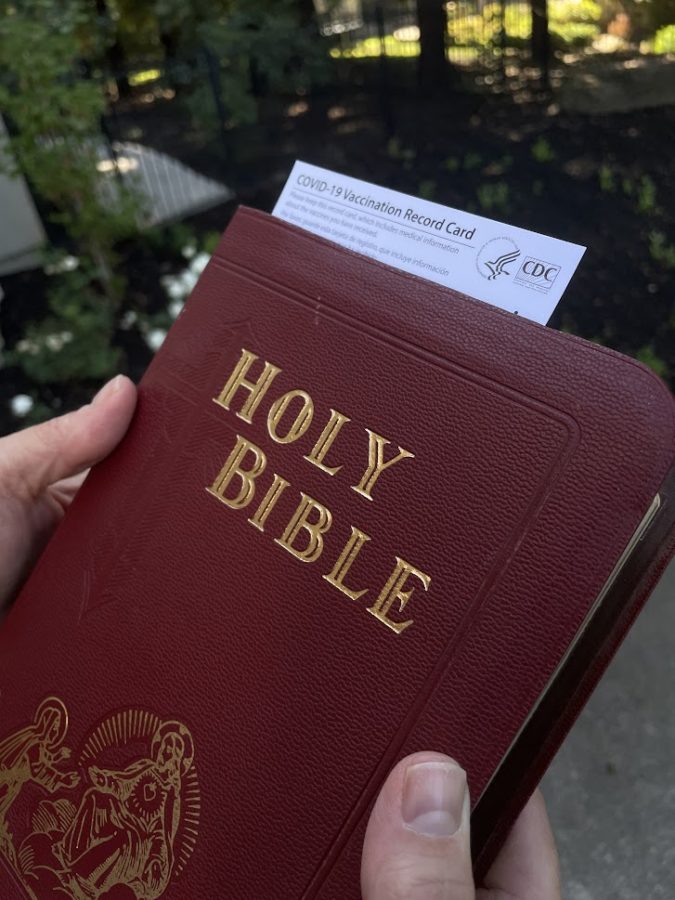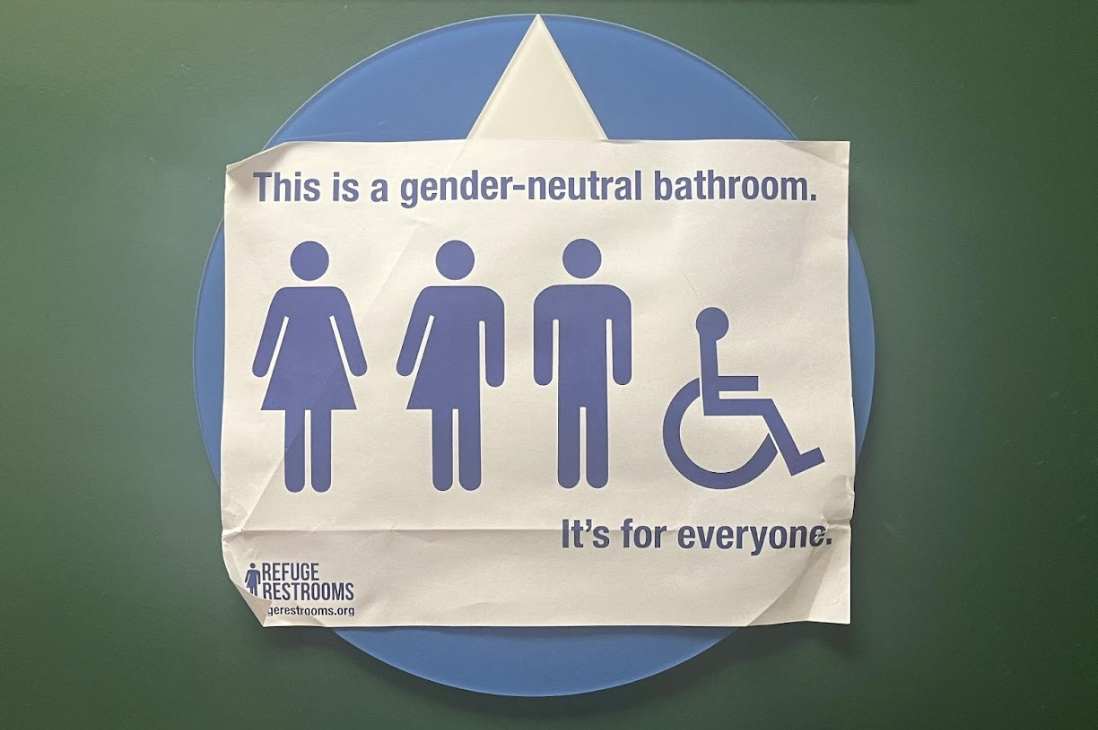The heated controversy spurred over separate, national bathroom policies throughout the United States regarding who – depending, in each case, on how gender is determined – may use either male or female bathrooms has been intensified by impassioned arguments from groups on either side of the issue.
Although there are more inclusive facility alternatives, such as family or non-gendered bathrooms, often public places such as schools offer only female or male bathroom choices. In determining gender lays the controversy – North Carolina’s House Bill 2 upheld the definition of biological sex, that “stated on a person’s birth certificate” to determine gender, whereas Target, after announcing a new national bathroom policy at their stores, has declared that employees and customers alike are free to use the restroom which corresponds with their gender identity.
“I believe policies protecting the rights of transgender individuals are important to ensuring their safety – even in the restroom,” said senior and Granite Bay High School Gender-Sex-Alliance club president Marty Kantola, who is a transgender male. “The point is, there shouldn’t be a debate about this.”
North Carolina’s House Bill 2 was found to be discriminating against transgender individuals and thus in violation of Title IX, which ensures the absence of gender discrimination in federally-funded education programs or activities. The Department of Justice told the state’s government officials to immediately stop enforcing the legislation or risk losing billions of dollars in funding for the North Carolina’s education programs.
Now it seems North Carolina and the Department of Justice are embattled in a mainly philosophical dispute. North Carolina Governor Pat McCrory filed a lawsuit at the end of the allotted time period given by the Department of Justice to eradicate HB2, in attempts to continue enforcing the law. The DOJ filed its own lawsuit against the state and governor, among other things, citing the law’s discriminatory policies.
Target, however, was met with public backlash for their implementation of a more progressive bathroom policy. At this time, almost 1,200,000 people have signed the American Family Association’s petition to boycott Target stores, claiming it “endangers women and children by allowing men to frequent women’s facilities.”
“I think the main reason people are against open bathroom policies is (because) they’re afraid of people who may take advantage of the policy to sexually assault someone,” said junior Reagan Tran. “But the thing is, if someone has intent to sexually assault anybody they obviously don’t care about the law and will find a way and a place. Open restroom policies don’t promote sexual assault – they merely allow transgender people to use the bathroom of the gender with which they most comfortably identify.”
In California, after the passing of AB 1266, transgender students who attend public school in grades K-12 may use the bathroom which corresponds to the gender they identify with, as well as play for a gendered sports team according to the same criteria.
Jessup McGregor, a GBHS assistant principal, said the administrative staff is looking at all parties involved to be as inclusive as possible before implementing a uniform bathroom policy.
“We are trying to move slowly because it’s charged, and I think whatever … we do, we get (complaints) from somebody,” McGregor said. “Our goal then is to … make sure we’re in compliance with what we need to do. So we work with our lawyers and have meetings about this kind of thing to make sure that we’re complying, which is good, but that’s really not the big thing. The big thing is how do we accommodate to people’s needs? How do we then (provide) service to every student on our campus?
“You have folks who are in various stages of transition also, emotionally, physically and mentally. Each one we take as a single case basis. We have not outlined a specific (protocol), like Target has, for example. We also have to balance out with the needs, wishes and desires of everybody on campus too. So it’s hard to come up with a blanket policy just yet, so we’re going slow. We’re taking each student individually and trying to (ensure) they have a hospitable environment to go to school in and get their education in.”
Marty Kantola pointed out that he has the right to use the bathroom that corresponds to his gender identity because he resides in California, but would still feel more comfortable in a gender neutral bathroom.
“When it comes to Granite Bay (High School), I know that I’d be physically safe using the restroom I feel comfortable in,” Kantola said. “Personally, I’d rather use a gender neutral bathroom. For example, Del Oro actually has a two stall, gender neutral bathroom on campus, which is awesome. As for using restrooms on campus, I actually avoid using the GBHS bathrooms at all cost, because when I go in either bathroom, I’m always afraid that someone will tell me I’m in the wrong place, when all I need to do is pee.”
Madison Shroyer, a Del Oro High School junior who transferred after attending GBHS, verified the existence of gender neutral bathrooms in the middle of campus which are open to anyone. Shroyer said she thinks it might be easier for students who are either transgender or struggling with their gender identity to use gender free bathrooms.
GBHS, however, has no gender neutral bathrooms.
“I think, across the education (system) in general, there’s going to be some shifting around, in terms of how we build our schools,” McGregor said. “But we have what we have right now and we have to adapt our facilities to (fit) the needs of our students.”
In regards to improving the comfortability of students using the facilities provided at GBHS, McGregor and Kantola both said neither the GSA or administrative staff have attempted to talk to one another about the bathroom policy at GBHS.
McGregor said that the district works with each student on a case by case basis to come up with an individual plan the student feels comfortable with.
“(We) have a vested interest in providing students with the best services possible, regardless of what they’re coming to us with,” McGregor said. “So we would absolutely be open to having a conversation, having even forums, potentially, to make sure that everybody feels like they have a voice and has access to the decision-making process. All students have an interest in their privacy and their ability to access facilities so we’re open to hearing from everybody, certainly.
“I think we’re all anxious to make sure that we get it right, and concerned about the implications if we get it wrong, either out of innocence or ignorance or otherwise. We all want to do the right thing by people, but it’s really hard because … a lot of people have a lot of very charged opinions. I hope that our student body has patience with us as we go through this and try to get it right.”
Nationwide, however, schools, companies and even states are struggling to find an inclusive policy which works for everyone. The difficulty lies in meeting everyone’s needs, and when bathroom policies fall short of expectations or personal desires, the American public is using the internet as an outlet to vent their concerns.
In regards to both Target’s newest company policy and North Carolina’s legislation, individuals took to social media or another online platform to petition or support the policy. The AFA’s online petition is one example of mass online protest.
The future of grassroots social movements – movements started by the public – might be more concentrated online.
“I think it is just in keeping with everything else in society, no one writes letters of any kind anymore – it is easy to post something to Twitter and reach tons and tons of people, so naturally people are doing that,” Sacramento State University Government Professor David Barker said, who has expertise in media and politics. “Traditional forms of protest take a lot more effort (and) organizing, and naturally most people don’t have time for that.
“I don’t think that people don’t protest … in traditional ways. I think they (do). But again, you can’t do it that quickly because someone has to organize it. It is easy and fast to get a bunch of signatures via social media, and we have now gotten to a point when a big majority of the population is on Facebook and a substantial percentage is on Twitter.”
Undoubtedly, the online presence of teens is particularly high – according to a study published in 2015 by the Pew Research Center, approximately 92 percent of teens surveyed said they engage in daily activities online. Teens may or may not choose to become politically active online, but if they do, is social media social justice effective?
“I think both forms – traditional and modern – … will continue to be important,” Barker said. “Social media may be easy and it may be impactful, but it is nothing like a march. People still need to take to the streets in large numbers to really get noticed. It is bang for your energy buck: you get a lot of bang for not much effort. That is why you are seeing it used so much now.”
However, Tran, who said she promotes her own political ideologies on her personal social media accounts “pretty often,” said she thinks social media is an effective way to make change.
“I think social media has a larger outreach than any other form of protest does – it raises awareness in a way that is totally unique and accessible to people everywhere around the world,” Tran said. “I’d dare to say that social media is more effective than traditional organized protests or letters. Discussions about topics pop up everywhere and allow so many people to see it and really promote more people to talk about topics, especially when things get trending and hashtags get started.
“Organized protests, even when televised, only reach so many people locally. The internet and social media are constantly checked by people, and when topics start to trend they do end up on television and other news sources. Social media really has the biggest reach of any other type of protest or discussion about a topic.”















